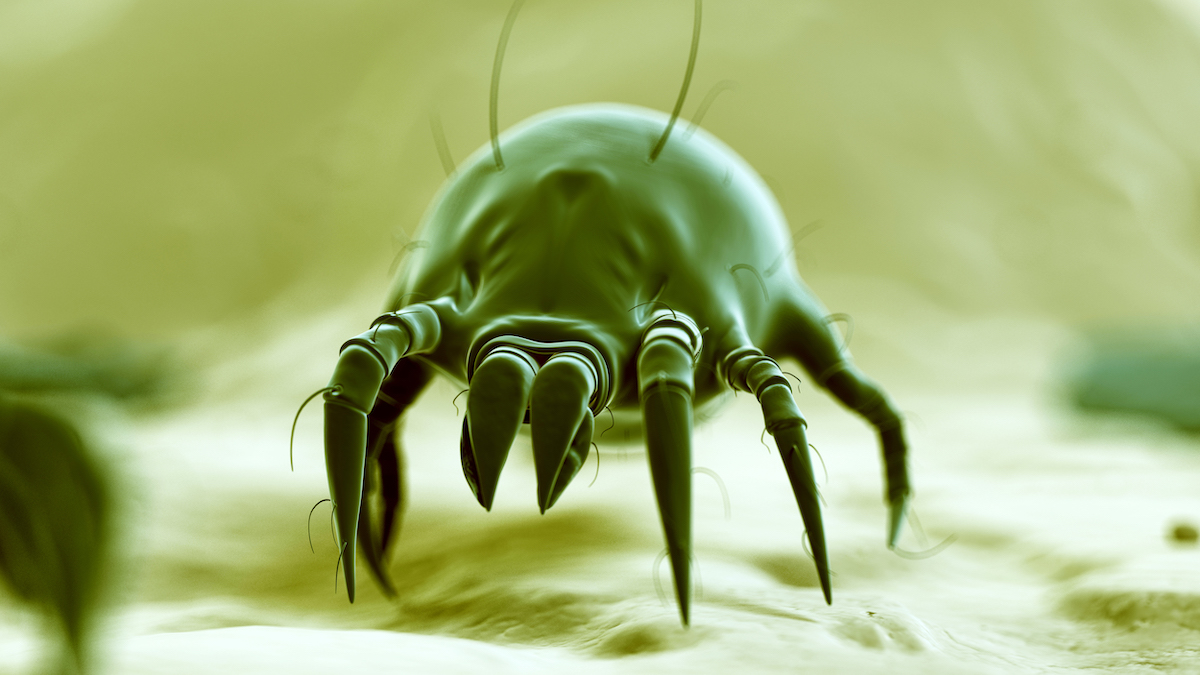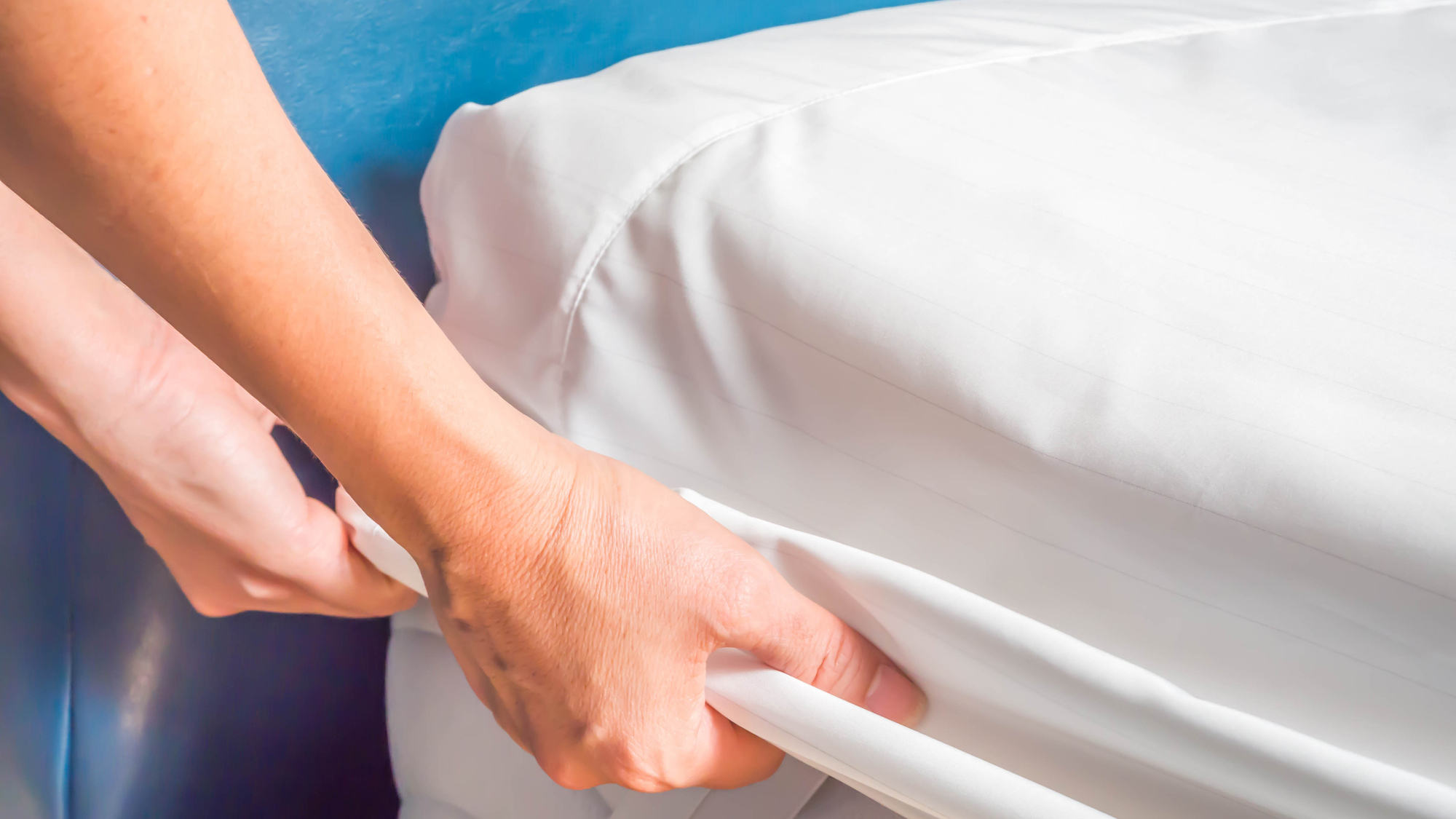How to get rid of dust mites in your bed
Banish dust mites for good with these 7 research-backed tips

Knowing how to get rid of dust mites from your bed is something we should all learn, and for multiple reasons. These pesky critters are only about a quarter of a millimetre long, and they're harmless to most sleepers. But if you have allergies, their droppings (not the mites themselves) can be troublesome.
Not only do dust mite droppings cause red or itchy eyes, an itchy mouth, nose or throat, itchy skin, sneezing or a runny and/or stuffy nose, they can also heighten symptoms of eczema and asthma.
But how do they get into your bed, and how can you stop them? Well, dust mites can be found anywhere there is dust. And, as we know, dust is a build-up of fine particles such as dirt, pollen and skin, found inside and outside of your home. Dust mites feed on dead skin cells, and flourish in warm temperatures and humid conditions, so it’s no wonder our beds can be magnets for these unwelcome guests.
While you’ll never be able to eliminate dust from your sleep space entirely, you can guard against a dust mite invasion by vacuuming, washing your sheets and investing in one of the best mattress protectors. So if you’ve spotted the early warning signs that the bugs might have taken up camp in your mattress, pillow, sheets, duvet or all of the above, we’ve compiled a research-led guide on how to cast out these critters and stop them from returning.
How do you kill dust mites?
We’ve listed seven different methods below to help banish dust mites from your home. Not every method will eradicate the creatures entirely, though. The most effective way of killing dust mites is to wash your bedding at 60°C, as AllergyUK says this temperature is enough to kill them.

Dusting and vacuuming your mattress and your bed’s hard surfaces will also help to prevent dust mites, by stopping the buildup of dust and debris.
Turning down the temperature in your home and keeping humidity levels to a minimum will prevent dust mites from reproducing.
Sign up for breaking news, reviews, opinion, top tech deals, and more.
1. Vacuum dust away
One piece of research noted that vacuuming was the ‘most efficient’ at preventing mites because it has the power to ‘permanently remove dust’ without making it airborne.

But it’s not just floors that can benefit from a once-over. Try vacuuming the surface of your mattress and headboard to help pick up the microscopic dust particles.
Just note: not all vacuums are created equal. Check out our guide to the best vacuum cleaner for the top tried and tested recommendations.
2. Dust with a wet cloth
As you might have already guessed, dust can be cleared away from hard surfaces (like your headboard or bed frame) by dusting.

However, instead of using a dry duster in these areas, research shows that a damp microfibre cloth, followed by a dry microfibre cloth (to remove any moisture) works best at capturing the dust particles. This way, it traps them rather than dispersing them into the air to eventually settle elsewhere.
3. Wash your bedding at 60 degrees
Ideally, we should all be washing our duvet covers, pillow covers and sheets every seven days. Doing so at 60°C will help to keep your bedding looking, feeling and smelling fresh. But it should also kill dust mites.

Research found that more than 95% of allergens (including dust mite droppings) can be temporarily removed from items by washing in cold or warm water. But to kill dust mites permanently, you'll have to wash at 55°C or above. To be safe, AllergyUK says 60°C is the magic number.
4. Clean your duvet, mattress and pillows
It’s not just our sheets that need washing. Cleaning your entire sleep space will help to reduce allergens and exile the little suckers, too.

According to our expert-led feature on how to wash a duvet, every 3-6 months is fine. And the same goes for pillows and your mattress. Wondering how to clean a mattress or how to wash a pillow? Then be sure to follow our step-by-step guides.
5. Add protective coverings
Prevention is always better than a cure. So once you’ve given your bedding a wash, stop the pests from revisiting by adding a mattress protector and pillow protector.

While these clever slips of removable material won’t get rid of any current mites, they will create a protective barrier between you and your bed, stopping dust and any more mites from taking up residence. If possible, pop on one of these allergen-proof barriers the moment you invest in the best mattress for you and your sleep style.
6. Turn down the temperature
Dust mites thrive in temperatures between 24°C and 27°C. We know it can be very tempting to pop the heating on, but warming your sleep space up to these temperatures can turn your bedroom into a dust mite breeding ground.

Instead, try to keep your bedroom between 16°C and 18°C. Dropping the temperature should stop any mite growth and it might just result in a better night’s sleep too, as experts say this is the optimal temperature for sleeping in.
7. Invest in a dehumidifier
Along with warm conditions, dust mites also flourish in humid environments. If your home has a relative humidity (RH) of around 65% or above, consider adding a dehumidifier to draw some moisture out of the air and remedy the issue.

The science backs this up. Research tells us that dust mites have a decreased survival and reproduction rate when the RH is kept below 50%. To limit their growth, AllergyUK recommends keeping your indoor humidity level between 30% and 50%.
Becks is a lifestyle journalist who specialises in writing about wellness and home products, from mattresses to weighted blankets and cooling comforters. She loves a good pillow for drifting off easily at night, as well as a snug duvet for cozier sleeping.
